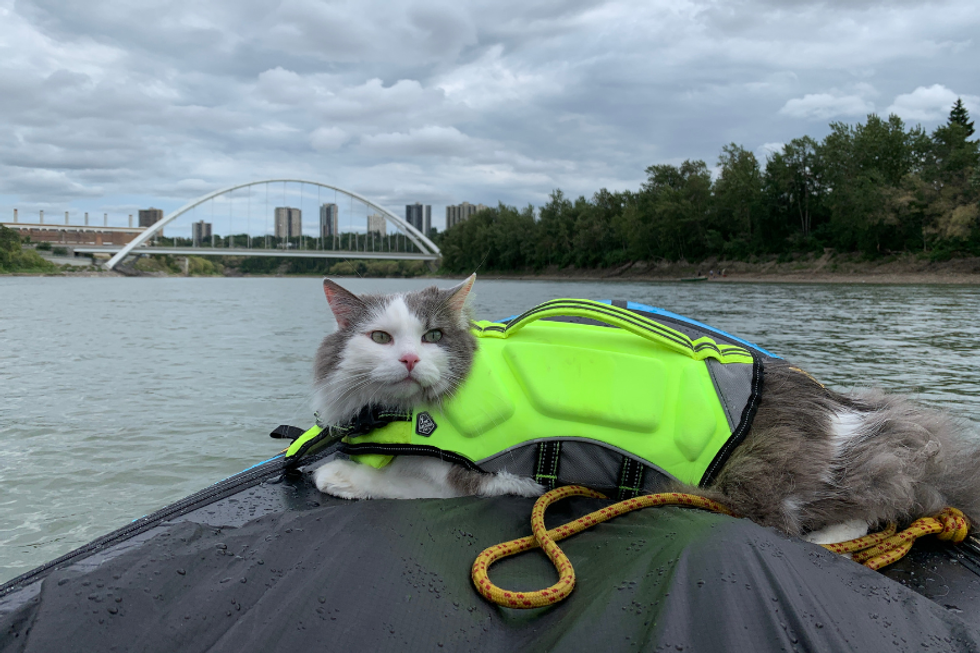On a Sunday in El Cajon, California, a city to the southeast of San Diego, Osama Abdulazeez, 14, from Baghdad, Iraq, kicks around a soccer ball with a group of fellow students. They call it “Street Soccer Sundays,” a relaxed, casual game. As members of a school soccer program, they save the regimented drills for weekdays. Today is about fun, not training.
These students participate in a program called YALLA, which stands for Youth and Leaders Living Actively. The local, nonprofit organization provides refugee and immigrant youth an opportunity to rebuild their lives in the United States through education and soccer. The program helps bridge the gap between these refugees’ and immigrants’ current education level and the standards of U.S. public schools, using soccer as a motivational tool.
“We have a saying here at YALLA. Soccer is the hook, college is the goal,” says Sarah Cooper, interim executive director. (The permanent executive director is on sabbatical.) It works; the program serves as a college hub with cutting-edge education and soccer programs offering tangible results. From 2015 to 2016, 88 percent of seniors received acceptance to four-year schools and 95 percent participated in the soccer program.
Simple word of mouth, establishing good relationships with nearby schools, and help from the Office of Refugee Resettlement School Impact program grew YALLA to capacity. “Last year 1,300 to 1,500 Syrians came to San Diego, and now these youth are on a waiting list with us,” says Cooper.
YALLA filled a growing need. According to the Pew Research Center, the United States admitted almost 85,000 refugees in the 2016 fiscal year, and San Diego County was one of their popular resettlement locations. Since 2012, the city of San Diego has taken in more Syrian refugees than any other U.S. city. San Diego County took in 3,100 refugees in fiscal year 2016—almost a 1,000 more refugees than Los Angeles County, which is three times its size. This is not the first time San Diego County has outnumbered Los Angeles County in refugee arrivals since 2009. San Diego’s weather, its melting pot of refugees, and its federally contracted resettlement agencies make it an in-demand locale.
YALLA currently serves approximately 450 refugee and immigrant youth, ranging from 6 to 18 years old and who come from all over the world, including Afghanistan, Egypt, Sudan, Liberia, Syria, and others. “We only have about 120 students in house,” says Cooper. “We don’t have standardized finance streams. We can’t provide staffing for more students, so money is needed to up that number.”
Students lucky enough to join, credit the program with helping them assimilate to life in America. Abdulazeez, the subject of a Disney Channel video on his YALLA soccer experience, says, “YALLA isn't like any other soccer club. They don't just want your money or want to improve their program by having you there, but they actually want to improve you—not just in soccer, but in school, at home, and in life.” A four-year YALLA veteran, Abdulazeez arrived in the United States on February 6, 2013, and became an avid soccer player at YALLA as soon as he could. “All my life I wanted to (play soccer) but never could because I just didn't have the opportunity. You can't really find soccer programs like YALLA in Iraq.”
[quote position="left" is_quote="true"]All my life I wanted to (play soccer) but never could because I just didn't have the opportunity. You can't really find soccer programs like YALLA in Iraq.[/quote]
Ryan Shera, soccer director and three-year employee at YALLA says, “I was attracted to the program because of the purity of its mission. It’s a positive environment for kids and families. These kids are able to play competition soccer. It’s a luxury, really. There are not the typical politics of pay to play. We focus on proper player development.”
To support the soccer program, YALLA received permission to use two elementary school fields in El Cajon. Equipment comes through generous donations and Shera claims the program is “well stocked.” The group also travels to games throughout San Diego in their new Mercedes van—purchased with grant money. Grants do come with strings attached, however. They have the swanky car, but not enough gas money to drive it, due to grant fund regulations. “We’re similar in that way to the nonprofit space,” he says.
YALLA soccer is set up with one competitive team and two player pools in which students can earn a roster spot and move up. If their standard drops, they get moved down. On top of maintaining and/or growing their abilities in sport, other rules apply. YALLA follows a study-to-play policy: Students must attend the school academy to participate in soccer matches and tournaments. “The number one rule is, always be on top of your grades. You cannot do anything in YALLA without good grades,” says Abdulazeez.
The program runs year round with the competitive team practicing three to four times per week. “We practice just like how professionals practice. We aren't just a soccer club that plays for fun. Some of our players are trying to go to the next level,” says Abdulazeez.
If players dream of playing professional or college soccer, Shera helps them meet these goals. “We have players now who have been with us for four to six years, and we developed them to go farther. We had one player invited to play on the U.S. development team,” says Shera. For those without soccer dreams, Shera uses the sport to teach life lessons. “They are able to thrive in soccer because we have a college preparatory program. With academics, the social aspect of the program, and the sport, they are well-rounded.”
It works. YALLA bucks U.S. high school dropout rates and fulfills its mission to remove the social and economic barriers confronting refugee and immigrant youth. They also prepare students for life after school.
Abdulazeez aims high with his future plans. “I definitely want to go to college. I want to become a soccer player; however, if that doesn't work out, I want to major in finance.” But for now, YALLA helps rear his—and hundreds of other students’—success. “They will help you out and always be there for you, and it is not easy to find people like that. At the end of the day, YALLA is a program that will improve you at anything and everything you do.”
















 This doggo has some concerns. Photo by
This doggo has some concerns. Photo by  Ready to eat.Photo by
Ready to eat.Photo by 

 Let us all bow before Gary, the Internet's most adventurous feline. Photo credit: James Eastham
Let us all bow before Gary, the Internet's most adventurous feline. Photo credit: James Eastham Gary the Cat enjoys some paddling. Photo credit: James Eastham
Gary the Cat enjoys some paddling. Photo credit: James Eastham James and Gary chat with Ryan Reed and Tony Photo credit: Ryan Reed
James and Gary chat with Ryan Reed and Tony Photo credit: Ryan Reed


 Rock deterioration has damaged some of the inscriptions, but they remain visible. Renan Rodrigues Chandu and Pedro Arcanjo José Feitosa, and the Casa Grande boys
Rock deterioration has damaged some of the inscriptions, but they remain visible. Renan Rodrigues Chandu and Pedro Arcanjo José Feitosa, and the Casa Grande boys The Serrote do Letreiro site continues to provide rich insights into ancient life.
The Serrote do Letreiro site continues to provide rich insights into ancient life.

 File:Ralph Waldo Emerson House (Concord, MA).JPG - Wikimedia Commons
commons.wikimedia.org
File:Ralph Waldo Emerson House (Concord, MA).JPG - Wikimedia Commons
commons.wikimedia.org